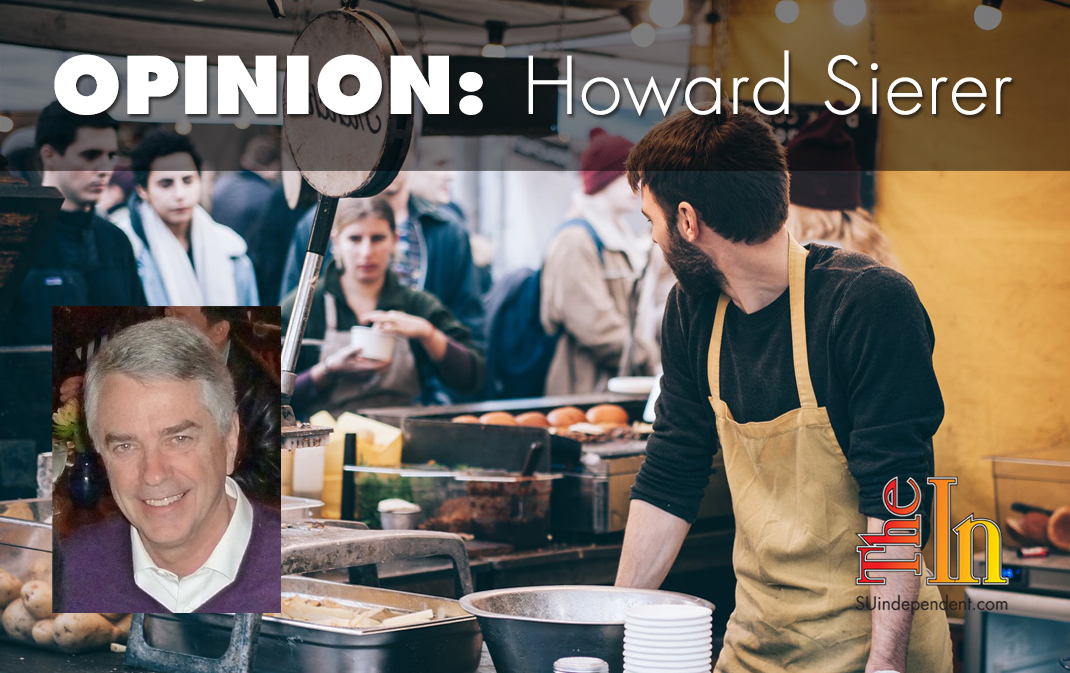
Far better than a federal $15 minimum wage
Democrats and their fellow travelers in unions and the media have been championing a $15 hourly federal minimum wage for years. Instead, it’s far better for states and cities to set their own minimum wages than it is for Congress to enact a blunderbuss, one-size-fits-all federal mandate for the entire country.
Arguments for raising the minimum wage center on ensuring that minimum wage workers earn enough to support a family. A $15 hourly minimum wage would provide $31,200 annually, enough for the proverbial family of four to live modestly. The $15 amount has a nice ring to it, enough to motivate union-organized protests at fast food restaurants and elsewhere across the nation.
For most businesses paying today’s minimum wage — fast-food restaurants are the poster children — labor is a large fraction of their operating costs. Most have small, single-digit profit margins. An increase in labor costs would require an immediate jump in their prices.
Fair enough, you say. By paying more for a hamburger or taco, we’d be doing our share to lift families out of poverty.
But there are fallacies with this line of reasoning.
First, a large percentage of minimum wage workers are teenagers working after school and on weekends. On average nationwide, these part-time teenage workers live in households with incomes approaching $60,000. A majority of older minimum-wage workers live above the poverty level, often working a second part-time job to supplement household income.
In 2016, the Bureau of Labor Statistics reported that only two percent of full-time workers were paid the minimum wage. Less than one percent of all full-time workers were both married and earning the minimum wage.
Second, given their slim profit margins, most businesses employing minimum-wage workers would search for ways to eliminate workers before they raise prices. Amazon has opened cashierless stores; others are planning likewise.
Job-killing examples here in southern Utah include ordering kiosks at McDonald’s and at Costco’s food court. Wal-Mart has added self-checkout counters while cutting back on cashiers. These companies and many others will look to automation in response to a major jump in labor costs.
A 2019 non-partisan Congressional Budget Office report found that up to four million workers could lose their jobs if the federal minimum wage were raised to $15 per hour. Workers who keep their jobs would be better off while the rest would be out on the street.
Currently employed teenagers, especially those being raised in difficult circumstances, would lose the chance to develop job skills important for the rest of their lives: getting to work on time, following workplace rules, taking direction from supervisors, and getting along with customers and fellow employees.
The biggest drawback: Mandating a federal minimum wage fails to address the vast cost of living differences in cities and towns across the country. A poverty-level income in Manhattan or San Francisco is over twice the amount needed in St. George. A poverty-level income St. George in turn is significantly higher than one in Panguitch or Orderville.
So what to do?
The solution has been unfolding for years with little fanfare and without federal intervention or political grandstanding. As of 2019, 29 states and the District of Columbia have set minimum wages higher than the federal minimum. A further 44 localities have set minimum wages higher than their state minimums.
For better or for worse, state and local governments are responding to their local needs. Interestingly, despite their complete discretion, today’s highest statewide minimum wage is $12 per hour.
Given this flexibility allowed by our federal form of government, there is no justification for a federal minimum that inevitably would be set too low for some areas and too high for others.
Experience has shown that state and local governments need to be careful about what they wish for. In liberal Oregon, unions pushed the state to enact one of the country’s highest minimum wages, $12.50 per hour in the Portland area, and scheduled to go higher.
Grocery stores responded by increasing the number of self-checkout lanes. Faced with losing members, Oregon unions now are sponsoring a proposition to limit the number of self-checkout lanes.
I’m reminded of the Luddites who smashed cotton mill machinery, hoping to preserve their jobs.
Oregon’s experience exposes the real reasons for the higher federal minimum wage push. Would you be surprised that it’s pure politics?
Democrats running for office have a nexus of interest with private-sector unions whose membership has been shrinking for decades. Candidates can appear to be fighting for families in poverty. Union motives are more cynical.
A higher wage floor for the lowest-paid workers gives unions leverage to ask for higher pay for their members, maintaining a higher skill/lower skill differential. The fact that very few of the millions who will lose their jobs are union members is of little concern to union bosses.
I join Nobel Prize winner Milton Friedman in recognizing that “the people who are hurt most by higher minimums are the most poverty stricken.”
I welcome state and local experimentation with minimum wages that match their specific conditions and cost of living. All can learn from the successes and failures of other jurisdictions.
The viewpoints expressed above are those of the author and do not necessarily reflect those of The Independent.
How to submit an article, guest opinion piece, or letter to the editor to The Independent
Do you have something to say? Want your voice to be heard by thousands of readers? Send The Independent your letter to the editor or guest opinion piece. All submissions will be considered for publication by our editorial staff. If your letter or editorial is accepted, it will run on suindependent.com, and we’ll promote it through all of our social media channels. We may even decide to include it in our monthly print edition. Just follow our simple submission guidelines and make your voice heard:
—Submissions should be between 300 and 1,500 words.
—Submissions must be sent to editor@infowest.com as a .doc, .docx, .txt, or .rtf file.
—The subject line of the email containing your submission should read “Letter to the editor.”
—Attach your name to both the email and the document file (we don’t run anonymous letters).
—If you have a photo or image you’d like us to use and it’s in .jpg format, at least 1200 X 754 pixels large, and your intellectual property (you own the copyright), feel free to attach it as well, though we reserve the right to choose a different image.
—If you are on Twitter and would like a shout-out when your piece or letter is published, include that in your correspondence and we’ll give you a mention at the time of publication.
Articles related to “Far better than a federal $15 minimum wage”
Ultra-progressivism leading Dems down the “maintenance hole”




There is an obvious two edge sword here in regards to the overall opinion. Either side has valid points, but if you are living and earning in a minimum wage universe, there is no doubt which edge cuts to the bone. However ROBOTS are the trump card, and eventually something has to give. “Danger Will Robinson” what is the solution?